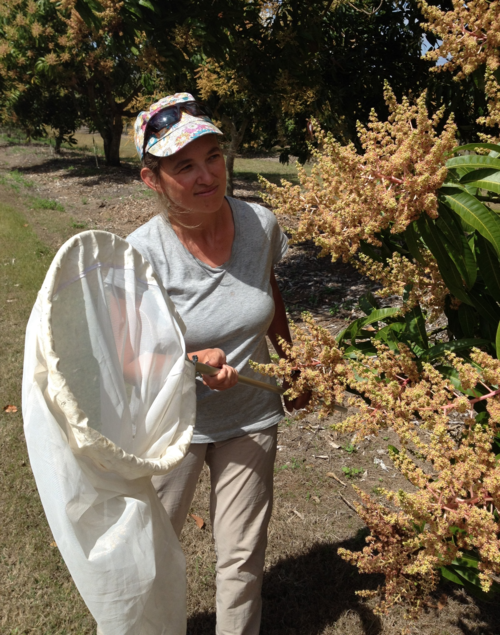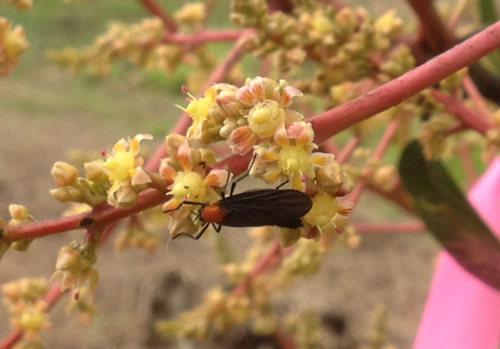Wild insects play important role in pollinating mangoes
Native flies have come out as one of the top pollinators of mango trees. Not only are they among the most frequent visitors to the flowers, visiting 20% more frequently than bees, they were among the top transporters of pollen.
The findings come from a study undertaken by Romina Rader from the University of New England who investigated the efficiency of a range of different pollinators that visit mango flowers (Keitt) on 10 farms in the Mareeba region. They compared how much pollen each insect transferred in a single flower visit, differences in the numbers of species at each farm and differences in flower visiting behaviour.
Although the findings are only preliminary, it shows the importance of insect movement to mango production. Pollinators, which include native and introduced bees, flies, beetles, moths and butterflies, contribute to the pollination of numerous leading global food crops.
The study found 44 different insects visited the flowers during the surveys. The twelve most frequent visitors included two bee species (Family Apidae), nine flies from four families (Calliphoridae, Rhiniidae, Syrphidae, Bibionidae) and one beetle (Tenebrionidae). Overall, flies visited mango flowers about 20% more frequently than bees. The native bee, Tetragonula carbonaria was the most common bee accounting for 34% of all insect visits to flowers. The European honeybee (Apis mellifera) accounted for about 14% of all visits. Of the flies, the small black tip fly (Rhiniidae) visited with the highest frequency (14% of all visits), and beetles accounted for less than 4% of all visits. In addition, different insect groups that made up the pollinator communities differed a lot among the 10 farms surveyed.
In terms of the amount of pollen transferred to a single mango flower, the native bee and several flies performed better than the honeybee. The native bee transferred, on average, about seven pollen grains per visit; the honey bee 2.7 pollen grains, the blue blowfly about 6.8 pollen grains and the black tip fly 4.2 pollen grains per visit.
Some flies, such as the black tip fly (Rhinninae sp.) preferred to visit flowers in the morning, while others, like the bibionid (Plecia sp.) were often more common in the afternoon/early evening. Visits at different times of the day may affect which is the best pollinator as flowers are more receptive to pollination in the morning than in the late afternoon.
Keeping these insects on your property year-round will help with pollination while the tree is in flower. Attracting and keeping pollinators is as simple as giving them the resources they need for their life cycle. This may include planting native plants that produce lots of nectar and pollen at times when the mango tree is not in flower close to your orchard. Also, using pesticides that are specific to the pest you’re targetting, rather than a broad spectrum insecticide spray, will keep the numbers of pollinators higher.
With further funding, Romina hopes to expand this work to examine pollen viability when transferred by different insects, pollinator visitation to other mango cultivars and growing regions and to understand what other resources (i.e. food or nesting) wild pollinators need at other times of the year.
Romina Rader is a Lecturer in Environmental Management at the University of New England, Armidale. This research was funded by a 2014 University of New England seed grant awarded to Romina Rader and Caroline Gross and was the subject of Sue Jaggar’s Masters research. Please contact Romina if you are intersted in discussing any of these results further on rrader@une.edu.au